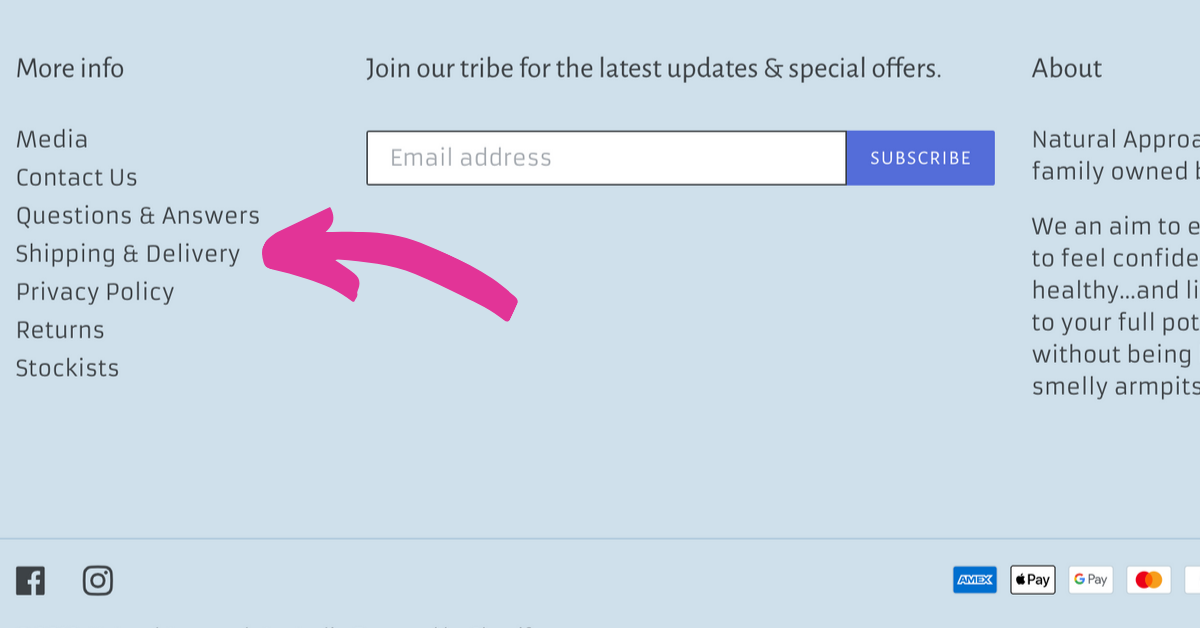One of the most common questions we get is around shipping.
- Should I offer free shipping?
- How do we calculate shipping?
- How do we communicate our shipping policy to customers?
- How do we not lose customers due to shipping costs?
Shipping costs are one of the top reasons people don’t buy. This is especially true for items that are small.
Now, you don’t need to tell me that it costs you time and money to ship your items to your customer. I get it. Packing and shipping the orders for The Good Bag Project was my least favourite job. So much time and effort is involved in getting your product to your customer – and then there is the monetary cost!
But it is what it is. Customers don’t like paying for shipping.
Why don’t customers like paying for shipping
- Value perception. If they buy a $20 product and have to pay $10 postage, they are paying $30 for a $20 product. But if you charge $30 and offer free shipping, they are paying $30 for a $30 product and people are a lot happier with that.
- Comparison. “What else could my dollar get me?” If you’re selling a $15 head-band and people are then hit with $15 on postage, in their mind they are missing out on another head-band.
- Free shipping is available. Just because you might not offer it, customers have become accustomed to having the option of free shipping. So when there is no option to dodge the postage fee, they feel disappointed. And disappointment is not a feeling you want to evoke.
So what can we do to overcome this issue and sell more on our online store?
1. Offer free shipping site wide
Build the shipping cost into the price and offer free shipping. For example, if you are selling a $30 scarf and you know it’ll cost you $8-12 to ship around Australia, make the scarf $40 with free shipping.
However, I don’t want you to stop there. I want you to offer incentives for people to buy multiple products. Here’s the thing, it usually costs the same amount to send one scarf, as it does to send 3 scarfs. And it definitely takes you the same amount of time and effort to send 1, 2 or 3 scarves. So offer incentives for people to buy more than one scarf. I recommend bundles. We did this with The Good Bag Project.
This is a great way to increase your average order value and move more stock. Plus you won’t lose sales due to people baulking at shipping costs.
2. Offer a free shipping threshold
A free shipping threshold is where people spend over a certain amount in order to get free shipping. This again is a great way to increase average order value. Let’s say your average order value is $65, you can offer free shipping on orders over $75 to get people to spend just that little bit more. You can also do this by offering bundles where you incentivise people to buy more than one item to qualify for free shipping. You need to know your numbers and you need to make this work for your business.
Exceptions to the rule
If you have a very large item to post, like a rug or item of furniture, people are a little more forgiving and are happy to pay a postage fee.
Keep it simple
Regardless of the strategy you use – and you can use a combination of all three, but I prefer to stick with just one – you want to make sure that your shipping policy is simple and easy to understand. You don’t want people feeling confused around what shipping rates apply. And you definitely don’t want people assuming they qualify for one shipping rate, and they get to the payment page only to realise that in fact they don’t. So make it as simple as possible and very easy to understand.
For example:
- Free global shipping on all orders over $75
- Free shipping on all orders within Australia
Communicate it before the payment page
Don’t leave people in the dark about how much they are going to have to pay for shipping. Shipping is most likely one of your FAQ’s and/or customer objections. Communicate your shipping policy clearly throughout their purchase journey. As with everything, step into your customers’ shoes and think about what questions they have at what point. I like to include the shipping policy throughout a website in the following places:
1. In a hello bar that sits above your menu

2. On each product page.
3. On a Shipping page that is linked to from your footer

4. In your marketing and advertising where you proactively answer your customers’ questions and overcome their objections. Click here to read our guide on how to do this in your marketing.
Want more on this topic?
- Join our free Facebook Group for lots of free trainings and more great info.
- Feel free to ask questions or comment with your key takeaways on this article. We will always read and reply to your comments.

Written by Megan Winter
Megan is an award-winning marketer and has worked with some of the fastest-growing eCommerce brands in the world.
Megan loves helping ethically-produced, heart-centred, soul-driven online store owners to make more income and achieve more impact.


